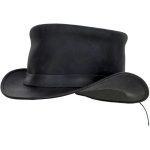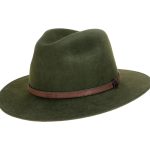When designing or redecorating a space, the choice of interior fabrics plays a crucial role in defining the overall look and feel of a home. Fabrics can dictate the aesthetic, comfort, and functionality of any room, whether it’s a cozy living space, a formal dining room, or a serene bedroom. With countless options available, selecting the right interior fabrics can be both exciting and overwhelming. Each fabric type brings unique attributes that influence durability, texture, and visual appeal. Understanding the different categories, their properties, and where to use them will help you make informed decisions tailored to your environment and personal taste. This comprehensive guide will give you valuable insights into various interior fabrics, their features, and tips for incorporating them into your design scheme.

The Importance of Choosing the Right Interior Fabrics
Selecting the right interior fabrics can impact more than just aesthetics; it affects comfort, longevity, and practicality within your home. The fabric you choose influences not just the visual appeal but also how the space feels and functions. Consider the texture and warmth of a fabric and how it complements your style and lifestyle.
When considering interior fabrics, it’s essential to keep in mind your household dynamics. For instance, households with pets or young children may require more durable fabrics than a couple living alone. Additionally, the visual appeal of fabrics plays a vital role in creating the desired ambiance and mood of a room. Whether you aim for a cozy and inviting atmosphere or a modern and sleek look, the right fabrics can help you achieve your vision.
Moreover, fabrics help absorb sound and can contribute to a room’s acoustics. Heavier fabrics like velvet or heavy drapes may dampen sound, creating a quieter environment. Conversely, lighter fabrics may create a brighter, more airy feel. These functional attributes further emphasize the importance of careful selection when it comes to interior fabrics.
Understanding Different Types of Interior Fabrics
To make informed decisions about which interior fabrics to use, it’s essential to understand the various types available and their characteristics. Familiarity with fabric types and their properties can greatly aid in choosing the right one for your needs.
Natural Fibers
Natural fibers come from plants or animals. They are biodegradable and typically more environmentally friendly. The most common natural fibers used as interior fabrics include cotton, linen, wool, silk, and hemp.
- Cotton: Cotton is breathable and soft, making it ideal for drapes, upholstery, and cushions. It is easy to clean but may wrinkle and fade over time with exposure to sunlight.
- Linen: Linen offers a crisp, textured finish. Its breathability makes it suitable for warm climates. However, it can wrinkle easily, which may contribute to a casual aesthetic.
- Wool: Wool is a versatile fabric, known for its warmth and durability. It has natural moisture-wicking properties and can be used in upholstery and rugs.
- Silk: Silk is luxurious and elegant but can be less durable than other options. It works beautifully in soft furnishings like curtains, but care must be taken to protect it from sunlight and wear.
- Hemp: Hemp fabric is strong and durable, with a unique texture. It is becoming increasingly popular due to its sustainability and eco-friendliness.
Synthetic Fibers
Synthetic fibers are man-made and often designed to mimic natural fibers. They can offer unique properties like stain resistance and durability. Common synthetic fibers include polyester, nylon, acrylic, and vinyl.
- Polyester: Polyester is versatile, durable, and resistant to shrinking and stretching. It’s often used in upholstery, drapes, and outdoor fabrics.
- Nylon: Nylon is strong and resilient, making it suitable for high-traffic areas. It’s commonly used in carpet and upholstery.
- Acrylic: Acrylic mimics wool in appearance and texture but is lighter and more durable. It is often used for outdoor fabrics due to its ability to withstand harsh weather.
- Vinyl: Vinyl is highly durable and water-resistant, making it ideal for kitchens and dining areas. It is easy to clean but can be less breathable than its natural counterparts.
Blended Fabrics
Blended fabrics combine natural and synthetic fibers to create textiles with characteristics from both. For instance, cotton-polyester blends benefit from cotton’s softness and polyester’s durability. These fabrics are often more affordable and easier to maintain than pure natural fibers while still providing a high-quality look.
Popular Uses of Interior Fabrics in Home Decor
Interior fabrics can be used in a variety of applications throughout the home. Understanding the different uses will help you decide where and how to implement them in your design.
Upholstery Fabrics
Upholstery fabrics cover furniture, adding color, texture, and personality to your space. Upholstery fabrics should be durable and easy to clean, particularly in high-traffic areas. Opt for materials like polyester, leather, or cotton blends for their resilience and aesthetic appeal. When selecting an upholstery fabric, consider the function of the furniture, the frequency of use, and the likely exposure to wear and tear.

Drapery and Curtains
Fabrics used for drapes can dramatically influence a room’s ambiance. Heavy fabrics such as velvet and brocade add elegance, while lightweight materials like sheer linen enhance brightness and create a casual feel. Consider thermal and light-blocking options if you need energy efficiency or privacy. The choice of fabric, length, and lining will provide additional functionality to your space while contributing to your overall design theme.
Cushions and Throws
Cushions and throws allow for experimentation with patterns and textures, adding comfort and style. You can easily switch these elements to refresh a space. Mix and match fabrics like linen, cotton, or knits to create visual interest while ensuring they blend with your overall design scheme.
Rugs and Carpets
Rugs and carpets add warmth and coziness to any room. Fabrics can include natural materials like wool or cotton or synthetic options for durability. Choose based on your lifestyle needs, color preferences, and desired aesthetics. Rugs can anchor a space and provide contrast or color depth, crucial in enhancing the overall design.
Wall Treatments
Innovative applications of interior fabrics can also include wall treatments. Fabric-covered walls add texture and warmth while creating a unique style statement. This method can be effective in formal dining rooms, home theaters, or creative workspaces, providing a distinct look that sets the tone for the space.
Factors to Consider When Choosing Interior Fabrics
When navigating your choices for interior fabrics, several factors can influence your final decision. Each consideration can create a more cohesive and functional design.
Durability
Consider how much wear and tear the fabric will face. In busy areas where furniture sees frequent use, choosing durable options is essential. Look for fabrics that withstand daily exposure and are stain-resistant if necessary.
Maintenance
Ease of maintenance should also play a role in fabric selection. Some materials require dry cleaning or special care, while others are machine washable. Assess how much time and effort you’re willing to dedicate to cleaning and upkeep before making your choice.
Color and Pattern
The color and pattern of your interior fabrics should align with your design vision. Consider how each fabric will contribute to the overall color palette and textures in the space. Strive for a balance that creates a harmonious atmosphere—all while reflecting your personal style.
Texture
Texture plays a significant role in the overall feel of a space. Mixing different textures can add depth and interest to a room. Consider how the touch of each fabric will affect the ambiance—soft velvets, crisp linens, and coarse wool can create layered experiences when combined thoughtfully.
Environmentally Friendly Options
Increasingly, consumers seek sustainable and eco-friendly interior fabrics. Look for materials produced from organic crops or recycled materials. Transparent sourcing and manufacturing processes can also enhance your environmental responsibility, allowing your choices to align with your values.
Trends in Interior Fabrics: Staying Current with Styles
As with any design element, trends in interior fabrics continually evolve. Staying informed of current styles can help keep your decor fresh and relevant.
Eco-Friendly Fabrics
The demand for sustainable design is on the rise, driving interest in eco-friendly fabrics. Organic cotton, reclaimed textiles, and innovative fabrics made from recycled materials are gaining popularity. These choices reflect a growing awareness of environmental impact, allowing homeowners to support sustainability while beautifying their spaces.
Bold Patterns and Colors
Modern design trends lean towards bold patterns and colors. This approach can add energy and character to a space. From geometric prints to large floral designs, incorporating these elements into your fabrics can create impactful statement pieces in cushions, upholstery, and drapes.
Texture and Layering
Layering fabrics with different textures is a powerful trend that enhances visual and tactile experiences in a room. Combining velvets, leathers, and linens can create inviting spaces that entice the senses. This trend encourages homeowners to experiment with fabrics beyond their conventional roles.
Multifunctional Fabrics
An emphasis on multifunctional fabrics is another trend shaping the market. Fabrics that combine style with practical features, such as light-blocking, water-resistant, or even fire-retardant properties, are gaining popularity. These textiles provide versatility, making them ideal for modern, multi-purpose living spaces.
Incorporating Fabric Swatches into Your Design Process
Utilizing fabric swatches in your design process is a practical approach to visualizing your choices. Fabric swatches allow you to evaluate how materials interact with light, color, and texture within your space.
Creating a Fabric Board
Developing a fabric board is a helpful way to visualize your selections. Collect fabric swatches that match your vision and arrange them cohesively. This practice helps you assess how different materials and colors will work together, facilitating your design decision-making process.
Testing Fabrics in Your Environment
Before making a final purchase, test fabrics in your home environment. Look at them in various lighting conditions, ensuring they align with your expectations. Observing how they blend with your existing decor may prevent costly mistakes and offer peace of mind.
Incorporating Trends Mindfully
While staying current with trends is exciting, always ensure they align with your personal style. Trust your instincts and choose the fabrics that resonate most with you. You can incorporate trendy elements thoughtfully without compromising your style preferences.

Conclusion
The world of interior fabrics is vast and filled with beautiful choices that can transform your living spaces. Understanding the characteristics of various types of fabrics, their applications, and the factors that influence your selection will help you forge a more cohesive and inviting environment. Keep in mind the importance of durability, maintenance, color, texture, and sustainability as you make your selections.
Furthermore, staying informed about trends can inspire fresh ideas for your décor while allowing you to express your individuality. By thoughtfully incorporating different fabrics into your design, you can create spaces that reflect your personality, comfort, and livability. The right choice in interior fabrics will not only enhance the aesthetic appeal but also contribute to creating a functional and enjoyable home environment.

